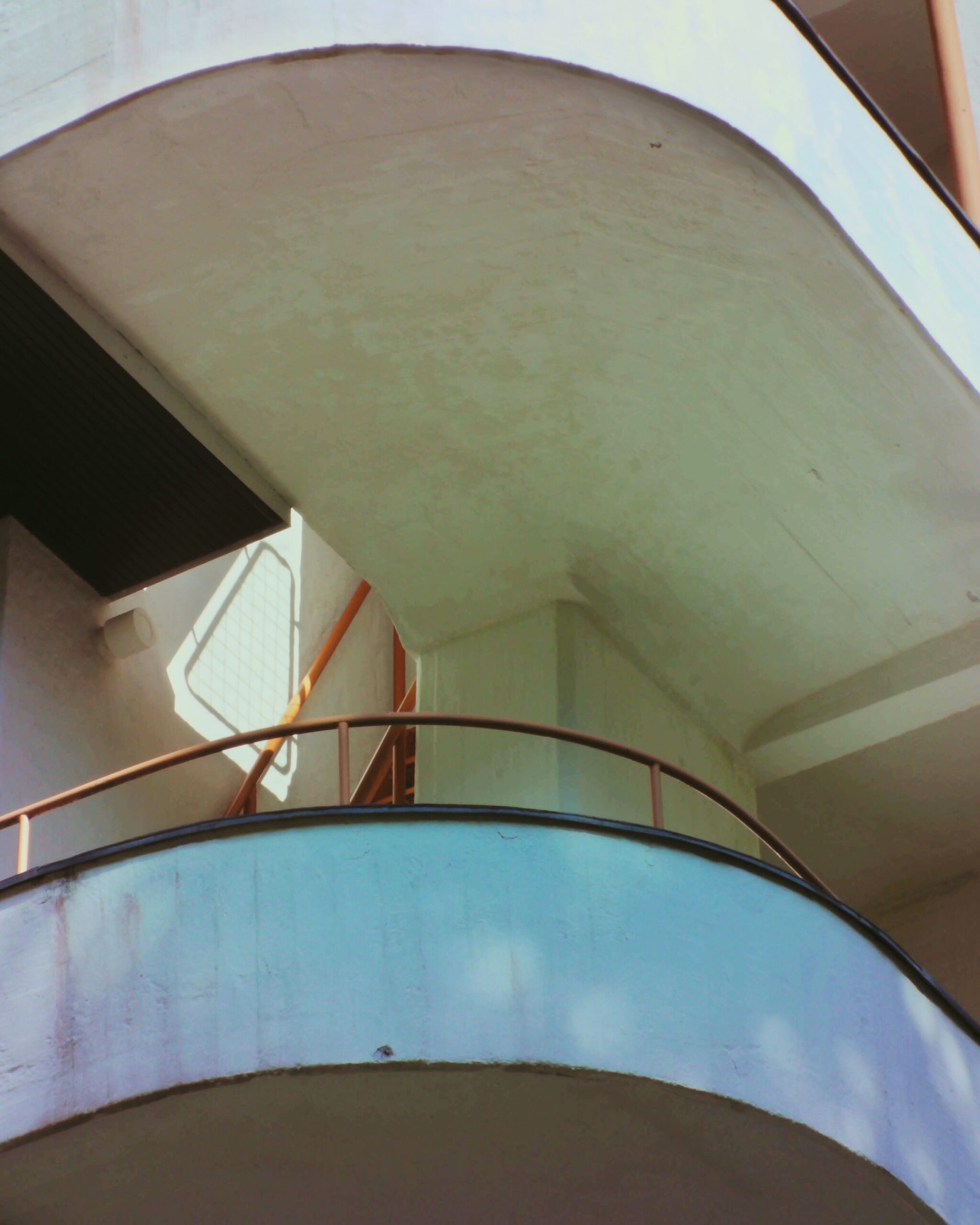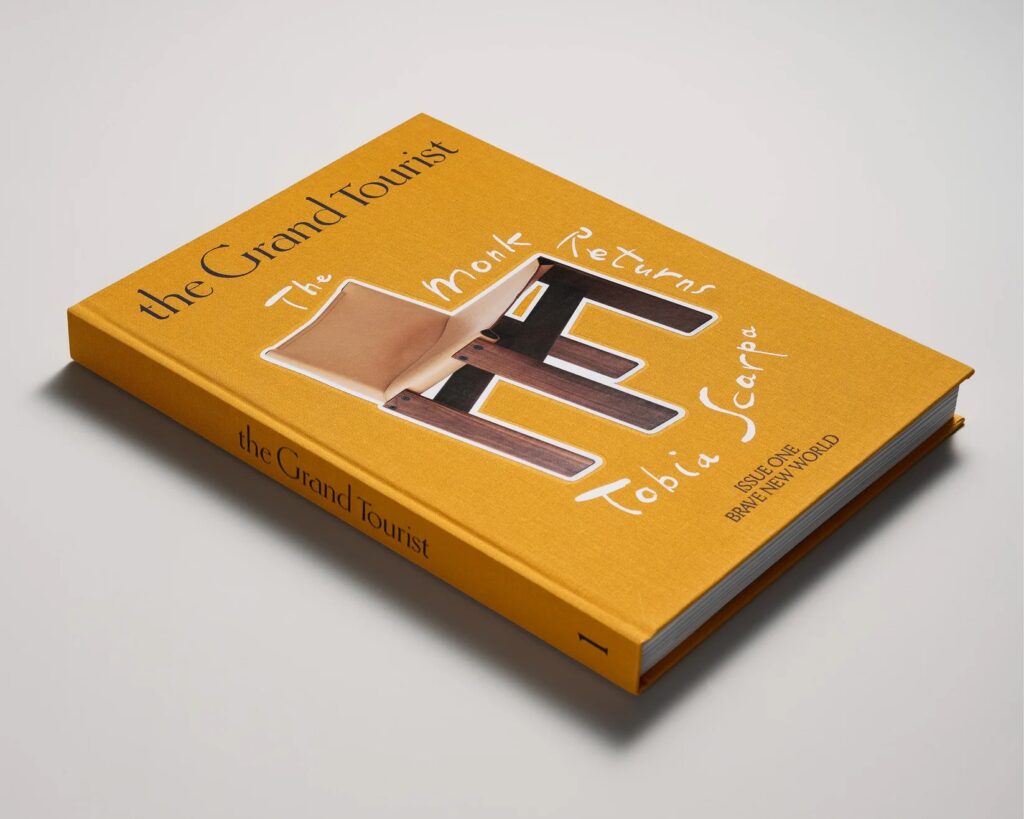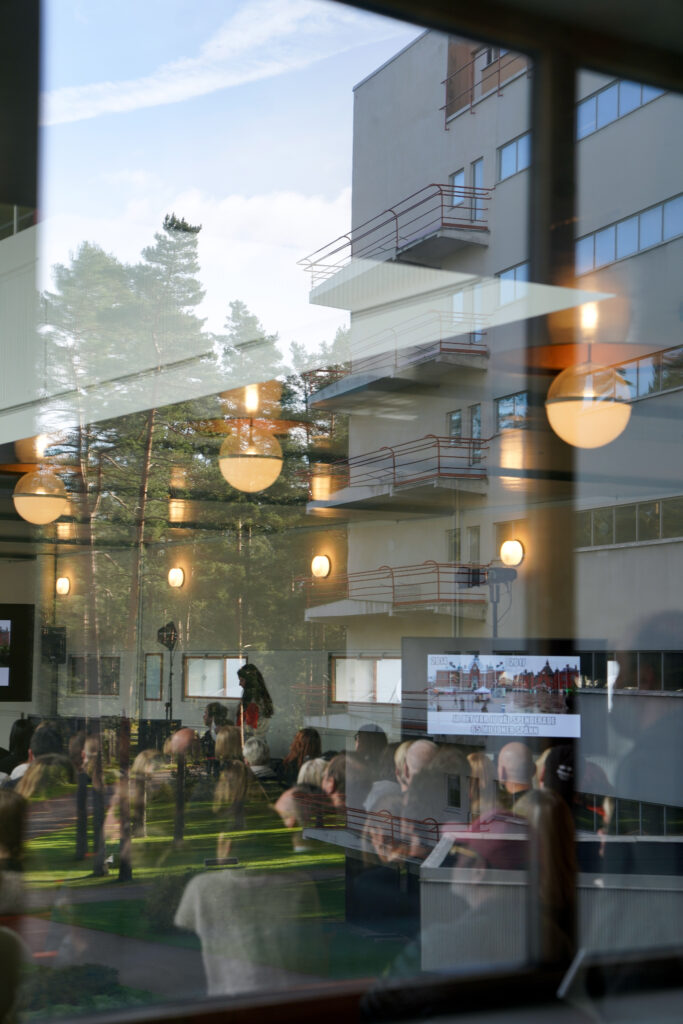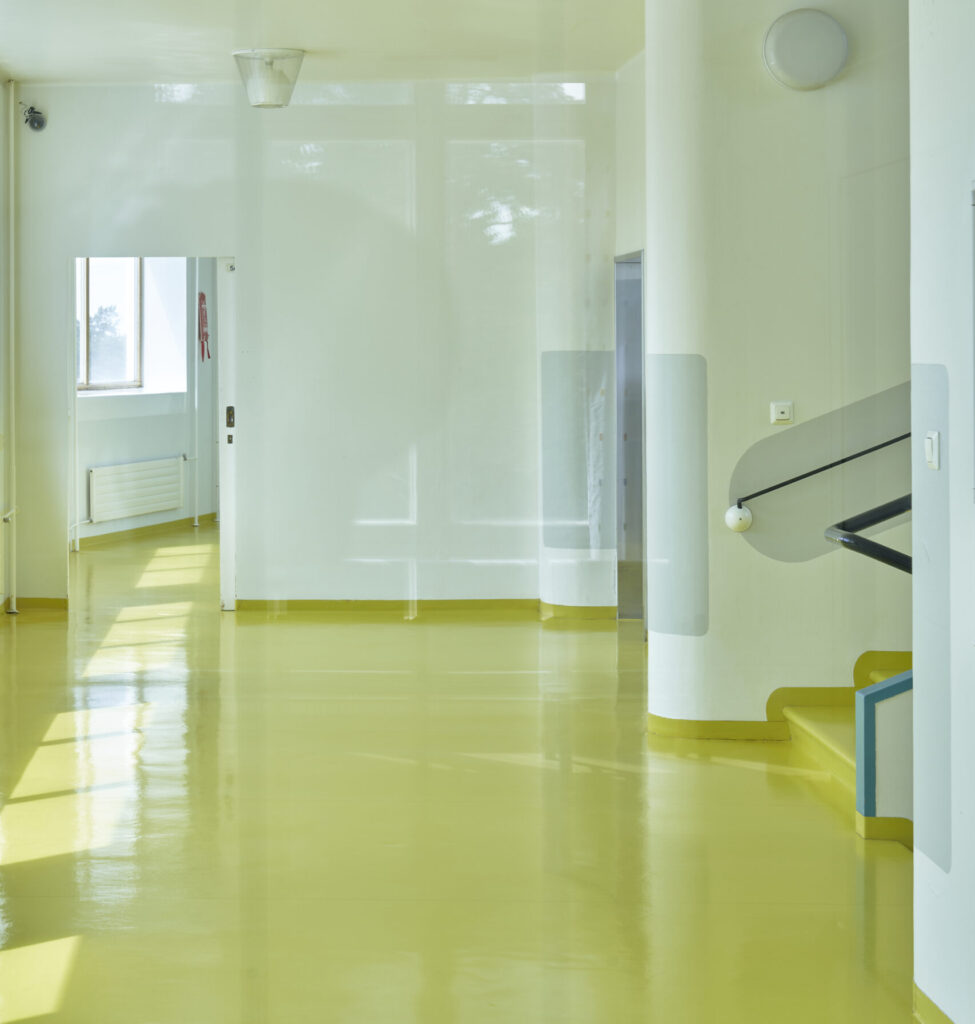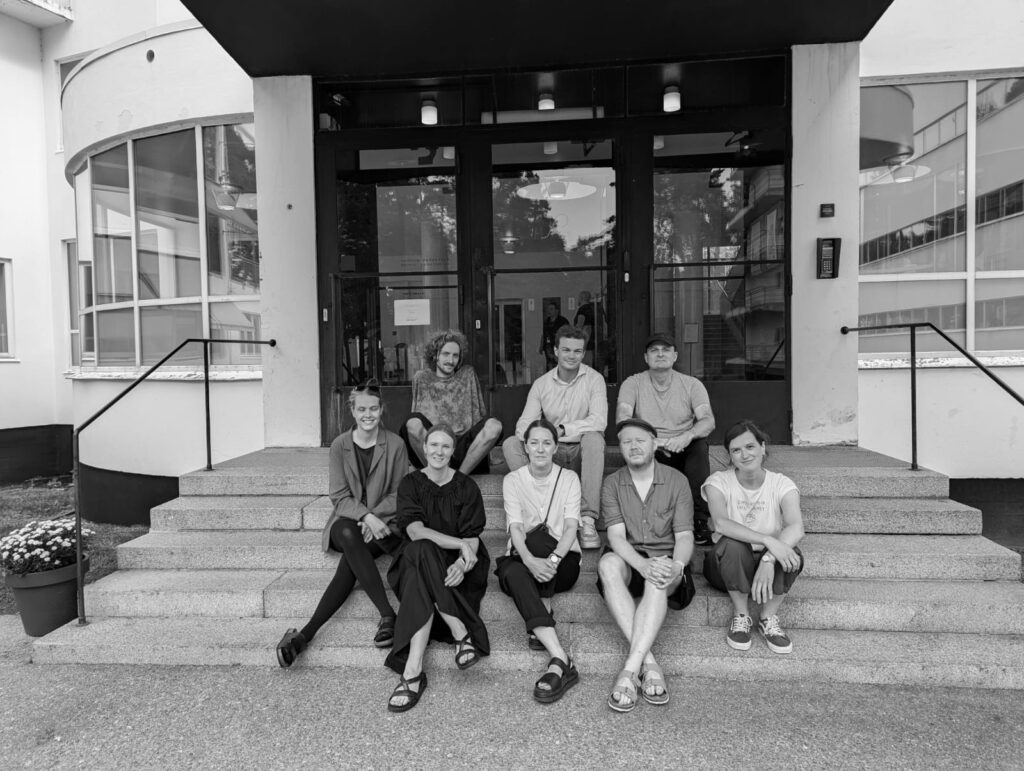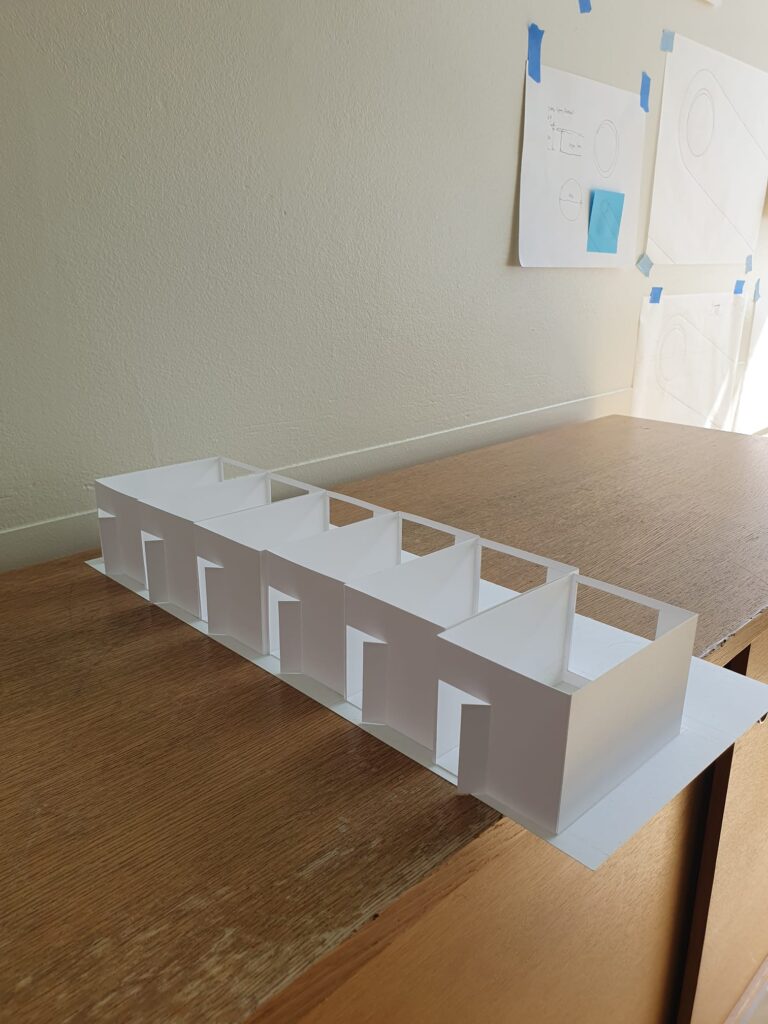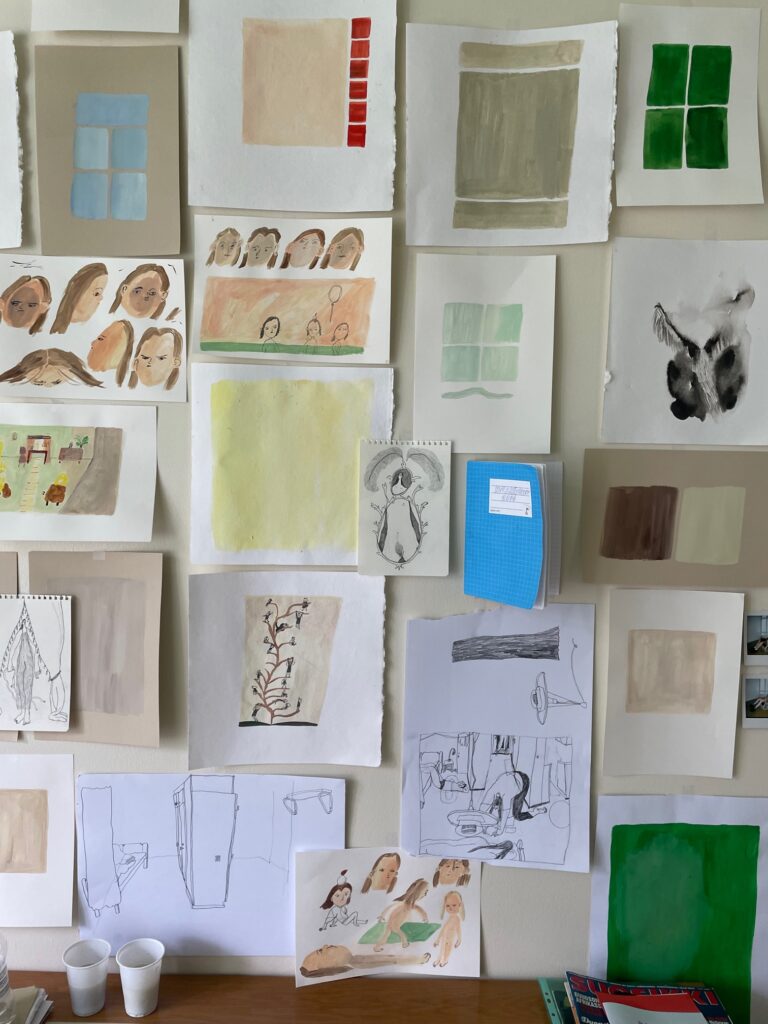If the Paimio Sanatorium is a manifesto of radical design philosophy, nothing manifests the Finnish summer and its moods better than strawberry cake. Therefore, it is very natural that we welcome the first summer residency guests of the Paimio Sanatorium Foundation with strawberry cake and coffee. Not a single day could be summerier.
This summer, the Paimio Sanatorium Foundation offers a unique experience for artists from various fields through an international program. The program includes creative fields such as architecture, design, visual arts, performing arts, music, literature, writing, film, and curating. Those selected for the program will have the opportunity to work and live in the masterpiece of modern architecture designed by Alvar and Aino Aalto for three weeks.
By the application deadline, more than a hundred applications had been received from all over the world, from Japan to Brazil. The quantity and quality of the applications surprised the selectors. A small pause was necessary to process the applications, and the number of selected participants eventually rose from 15 to 21.
Now it’s time to meet our first summer residents, the class of June: Brazilian-Japanese ceramicist Danielle Yukari, Finnish artist Juliana Hyrri, American sound engineer Malloy James, French-Canadian design duo Louise Dousset and Xander Maclaren, Finnish artist Anna Pesonen, and British writer Gráinne Lyons.
Paimio Sanatorium brings together thinkers and doers, makers and visionaries to collaboratively build unexpected ways to answer questions through radical, practice-based solutions. Although the work plan for the residency period was flexible, the June group is closely tied to the Paimio Sanatorium and the Aaltos’ design philosophy in both their projects and methods.
Ceramics and Analysis
’’I am interested in other ways of living and how minimal and essential sources in our daily lives can change our perspective of the world today. I love to be a part of this potentially transformative experience, both for my work and for my personal life’’, Danielle Yukari says.
Yukari’s work explores the craft and the repetitive gestures involved in ceramics practice or any other craft activity, with the production of functional objects that often feel like sculptures and sculptures that can be repurposed into practical tools.
’’I’m also looking forward witnessing how this architecture practice, thoughts, landscapes, and meticulous eye for detail will affect/reflect on my work in terms of concept, colors, shapes, and structures and how the small-scale sculptures produced can activate the space, offering the user a concentrated experience of appreciation and meditation’’, Yukari says about her work during the residency.
’’Oh, it will affect your work!’’ Louise Dousset assures Yukari.
Yukari agrees as she was in residency in Joshua Tree last year, and the place found it’s way to her work. Also Louise Dousset and Xander Maclaren have firsthand knowledge of this. They completed their bachelor’s degrees in Eindhoven, a once-heavy-industrial city of the future built as an extension of the Philips electronics factories that drove its economy.
’’Living and working in a modernist landscape which no longer had its intended function had a profound impact on our understanding of design, architecture, and planning at every scale.’’
According to Maclaren, it stands to reason that the sanatorium, shaped not by economic logic but for the express purpose of health, will bring out something different in his and Dousset’s work.
’’We are interested in the place not just as an icon or form but as something that exists today in a particular context that we can only fully understand by inhabiting it.’’
Dousset and McLaren are documenting architectural details of the building, free of interpretation as much as possible, and then structuring the information for analysis in an internal database, likely including both analogue and digital entries.
’’Finally, we will use the remaining time to synthesize our gathered information and analysis into something concrete that will employ our design and making skills.’’ Maclaren says.
A place to heal
’’I read that Finnish architect Juhani Pallasmaa has described the Paimio building as somewhere that ‘exudes a rare atmosphere of optimism, healing, and inspiration’’, Gráinne Lyons says.
Her debut work of non-fiction, Wild Atlantic Women: Walking Ireland’s West Coast, is a nature writing memoir that documents how, at a crossroads in her own life, she spent three years walking the Atlantic Irish coastline in the footsteps of eleven women deeply rooted and connected to this landscape, researching their stories as she walked.
’’I will use this residency in a place of optimism, healing, and inspiration, set in nature, with a unique architectural and human history, to write and illustrate a non-fiction essay.’’
The essay will be about her own very personal experience of suffering from adenomyosis and endometriosis over the past four years. Paimio inspires and sets the tone for Malloy James’ residency work too.
’’In my experience, nothing is able to communicate the tensions and complexities of human relationships and history quite as music can’’, Malloy James says.
This is why the Paimio Residency is so interesting to him – as a space designed to engender peace and healing to residents, and to communicate a feeling of serenity and community through adversity and illness. He wasn’t aware of Paimio Sanatorium or Aalto’s architecture before applying by his agent’s request.
’’The history and context are really compelling as the basis of inspiration for a new sound work, which responds to and explores that legacy, bringing it into a contemporary vernacular.’’
Especially in a hip-hop context, which is built on the principle of sampling and resampling, you are able to bring multiple disparate voices together across time, contexts, and cultures. As a musician from Harlem, James’ personal history and experience relate to so many conversations on space, race, culture, appropriation, violence, meaning, and control, and how a positive, creative force and future can come from difficult histories.
’’I’d be excited to see, experience, and explore inspiration as it comes from an experience of intentionality, peace, and care through illness.’’
James is creating a 3D sound audio “film” that visitors could possibly experience all over Paimio Sanatorium with their own headsets as their minds write the script of their very own. The audio would be launched with QR codes.
Community enhances creativity
Juliana Hyrri is preparing her third graphic novel, which centers on the interpretation of the child in Western culture as an Other, a foreign, and animalistic figure. The residency is intended to serve not only as a place for her to work but also as a journey to gather material and color inspiration.
’’Additionally, interaction with fellow artists in what is usually such a solitary job offers a shared experience and thus a new dimension to my own work.’’
Working in a foreign environment creates an intense and fruitful foundation for new conversations and ideas. After two successful works, the pressure to create a third is significant.
’’The residency acts as a sort of contact point for something new, something you wouldn’t even think of finding otherwise. The script is ready. Now I just need to move on to the next phase of creation.’’
Childhood is universal. In her graphic novel, Hyrri addresses not only childhood but also some challenging and deeply personal themes such as power dynamics, violence, and sexual abuse.
’’Even though the subject is heavy, I really don’t want it come up as gloomy’’, Hyrri concludes.
Photo: Xander Mclaren

